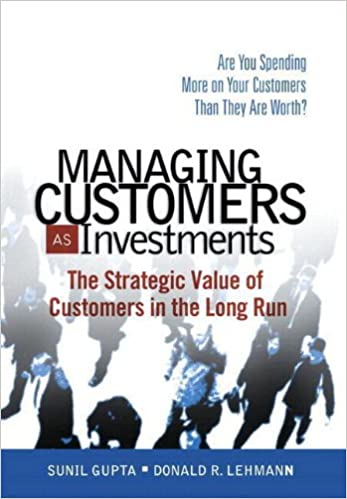“Managing Customers as Investments” was first published in 2005 and provides a framework for understanding and managing customer lifetime value (CLV) as a key metric for customer relationship management (CRM). It emphasizes the importance of treating customers as investments that can generate long-term value for a company rather than as a short-term source of revenue.
CLV is a critical metric for managing customer relationships
Customer lifetime value (CLV) is a metric that measures the present value of all future cash flows generated by a customer over their lifetime. It is a critical metric for managing customer relationships, as it helps companies understand which customers are most valuable and where to focus their resources for maximum impact.
CLV is a forward-looking metric
CLV is a forward-looking metric that takes into account future cash flows, not just past performance. By using predictive analytics, companies can estimate the future value of a customer and make decisions accordingly.
CLV can help companies allocate resources more effectively
By understanding the value of their customers, companies can allocate resources more effectively. For example, they can invest more in customer service for high-value customers, or focus on customer acquisition for segments with high growth potential.
CLV is an ongoing process
CLV management is an ongoing process that requires continuous monitoring and adjustment. Companies must regularly review and update their CLV models to reflect changes in customer behavior, market conditions, and other factors. By doing so, they can ensure that they are making the most informed decisions possible.
Different customer segments require different approaches
Not all customers are created equal, and different segments require different approaches. Companies can use CLV to segment their customers based on value and develop targeted strategies for each segment.
Customer acquisition costs must be weighed against CLV
Customer acquisition costs (CAC) can be a significant expense for companies, but they must be weighed against the CLV of the customers being acquired. By understanding the long-term value of a customer, companies can make more informed decisions about how much to invest in customer acquisition.
Data analytics is critical for effective CLV management
Data analytics is critical for effective CLV management, as it allows companies to identify patterns and trends in customer behavior and develop data-driven strategies. Companies can use machine learning and other advanced analytics techniques to gain deeper insights into customer behavior and preferences.
CLV must be balanced against other metrics
While CLV is a critical metric, it must be balanced against other metrics, such as customer satisfaction, brand awareness, and market share. Companies must take a holistic view of their business and consider multiple factors when making decisions.
Retaining high-value customers is key to sustained growth
Retaining high-value customers is essential for sustained growth. Companies can use CLV to identify their most valuable customers and develop strategies to keep them engaged and loyal, such as providing excellent customer service, personalized marketing, and exclusive offers.
Customer development is an opportunity to increase CLV
Customer development involves identifying opportunities to increase the value of existing customers, such as by cross-selling or upselling. By leveraging customer data, companies can identify these opportunities and develop targeted strategies to increase CLV.


Member discussion: